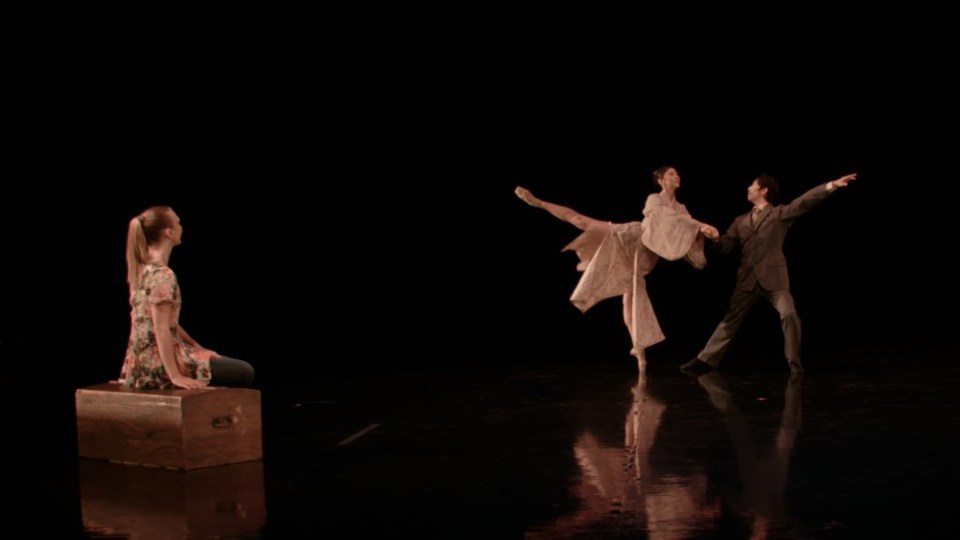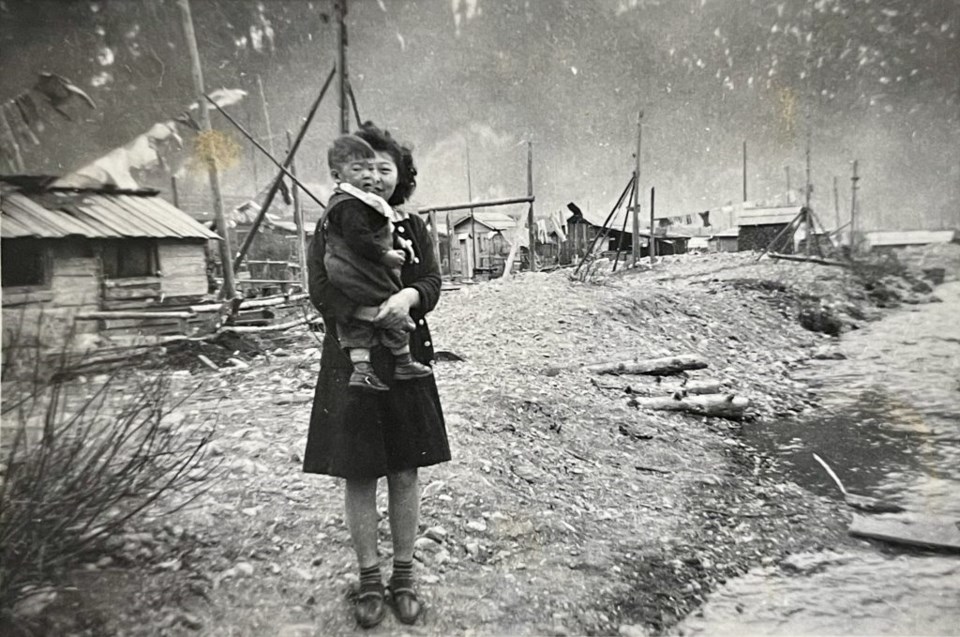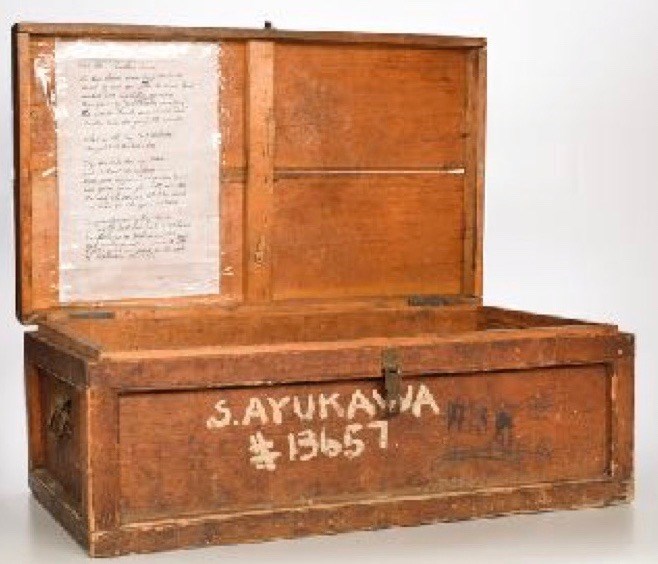
Bravo Niagara! Festival is moving into a bold new frontier with the commission of an original ballet, and a sneak peek of the first scene to premiere online on Feb. 5.
Kimiko’s Pearl captures a story with deep personal meaning to mother and daughter co-founders Chris Mori and Alexis Spieldenner, while at the same time encapsulating the experience of thousands of Japanese Canadians who were detained and dispossessed during World War II.
The roots of the project harken back to Spieldenner’s thesis at Duke University in 2012, “Voices of Four Generations: A Story of the Japanese Canadian Community from Issei to Yonsei.” The project gave her a chance to delve into her own family’s history in Canada, beginning with her maternal great-grandparents, Shizuo and Natsue Ayukawa leaving Japan to start a new life here at the beginning of the 20th century. They settled in Mission, BC, where they built a strawberry farm before they were removed from their property during the war.
With the power of a few research grants behind her, Spieldenner was able to dig deeper and deeper into her family’s past, discovering along the way the struggles her ancestors faced that weren’t talked about from generation to generation.
Bravo Niagara!’s Voices of Freedom Festival in the past has focused on the experiences of the Black, Romani and Jewish communities. When Mori decided it was time to bring her own culture to the forefront, she thought of her daughter’s thesis, and reached out to some family members, one of whom sent her a dropbox full of photos neither woman had previously seen.
One photo that stood out was that of a trunk, Mori’s grandfather’s name and an arbitrary number painted upon it. It had been donated by the Ayukawa family to the Canadian War Museum. Upon further digging, Mori discovered that her grandfather had actually built the trunk while he and his family were being held in an internment camp in BC dubbed New Denver.
The trunk was accompanied by a poem written by Kaita after the Canadian government signed the papers for redress atoning for the treatment of Japanese Canadians during the Second World War.
“The poem really sums up a lot of the feelings that the Japanese Canadians who experienced the internment felt but never talked about,” Mori says.
“These repressed feelings,” adds Spieldenner, “and the metaphor of the trunk holding those memories, were really powerful.”
Originally, Mori envisioned a short music video, with original music from Canadian composer Kevin Lau, interspersed with some of those family photos. But the resilience of her forebears convinced her it had to become a bigger project.
“I always dreamed of presenting a ballet, so I went back to that dream,” Mori remembers. “When we filmed Menorah, our Holocaust program, it was co-produced by Jeff Herd, the former executive director of the Royal Winnipeg Ballet. He came here and stayed at my dad’s house. I ran the idea by him, and that’s how it started.”
Mori and Spieldenner brought in Howard Reich, the retired critic for the Chicago Tribune who had also helped with Menorah. Reich set down to flesh out the story to cover four generations in the lives of a Japanese Canadian family, with Mori’s and Spieldenner’s ancestors as the base.
The pearl of the title came to Mori after re-reading her aunt’s poem.
“It’s about how a pearl is made,” she says. “It’s this irritant that over the years, layers and layers develop to make the pearl. It represents the intergenerational reverberations, how it’s affected every generation. There wouldn’t be a Bravo Niagara! if it weren’t for my parents. They started with nothing after the internment to develop a successful business.”
Mori and Spieldenner put together a creative team, the majority of whom are Asian, including Lau, sound designer Aaron Tsang
and choreographer Yosuke Mino. Herd signed on as director and enlisted Royal Winnipeg Ballet principal dancers Alanna McAdie as Kimiko, and Yue Shi and Chenxin Liu in the roles of Mori’s grandparents. Lau gathered four expert and accomplished musicians to bring the score to life.

The character Kimiko is a 15-year-old Toronto girl who discovers an old family trunk containing a diary and keepsakes. The diary brings to life the story of her ancestors fleeing poverty to come to Canada. It takes her through the cruelties of internment brought about by the invasion of Pearl Harbour, then the family’s efforts to restart their lives in post-war Toronto, where Mori’s parents Tsugio and Ryuko started their business, Mori Safety.
Kimiko, a stand-in of sorts for Alexis, experiences her family’s history as it unfolds before her eyes in a tale of heroism, hope and resilience in the face of racism. The entire ballet encompasses eight movements, with the opening scene being the focus of the Feb. 5 premiere.
It is fascinating to know the story and to experience the beauty and drama of both the music and the dance in the nine-minute performance. McAdie embodies Kimiko, digging into the crate to read the diary, while Shi and Liu tell the first 40 years of the story through movement. There is joy, wonder, playfulness, toil and despair, all climaxing with the government’s decision to intern Japanese Canadians following the Dec. 7, 1941 bombing of Pearl Harbour by Japan.
Art Miki, the president of the National Association of Japanese Canadians from 1984 to 1992, fought for and signed the agreement for redress with Prime Minister Brian Mulroney in 1988. The settlement included a payment of $21,000 for each survivor of internment and a $12 million community fund. Mulroney also delivered an apology for the wartime internment policy to the House of Commons of Canada.
Miki, a third generation Japanese Canadian, experienced displacement as a child 80 years ago. He and his family were forced by the government to move from their fruit farm near Vancouver to Ste. Agathe, Manitoba, into a one-room house that they had to share with other families.
Miki lives in Winnipeg, and attended the performance of the first act of Kimiko’s Pearl. Mori and Spieldenner were thrilled to host the man who fought so hard for the apology and compensation for those who suffered in the 1940s.
With 2022 marking 80 years since more than 20,000 Japanese Canadians were interned, Miki sees the Bravo Niagara! project as an important one to commemorate the sacrifices that were made by the community.
“There are very few people left who experienced it,” Miki, a Member of the Order of Canada says. “Chris and Alexis are using a different medium to remember the past. Too often we don’t use the arts enough to express our feelings. They’re using a contemporary medium to tell an important story about our legacy.”
Though only the first act has been captured by the video thus far, the women have plans to host the full performance of Kimiko’s Pearl in the Niagara region some time in the future. It will involve the biggest budget for a single Bravo Niagara! performance ever, supported somewhat by a Canada Council grant and the largesse of local arts supporters.
And, in another first for the festival, they also hope to release the full score as a CD in 2023.
It’s impossible to hear the story of how Kimiko’s Pearl came to be without making the link between how four generations of Mori’s and Spieldenner’s family repeatedly displayed the grit and determination needed to maintain hope and positivity in the face of adversity.
With the recent loss of Mori’s father (Spieldenner’s grandfather) Tsugio (Robert) Mori on Dec. 29, the timing of the premiere is even more deeply poignant.
“I’m really happy that my father was able to see the video and hear the music,” reflects Mori. “He followed our journey all through the past year. He watched this and his eyes would well up with tears and emotion.”
“He was very proud that his Japanese Canadian story was being told,” Spieldenner adds. “And he really connected it with the community across Canada. He was supportive all along and proud that we were doing this.”
Of her mother Ryuko (Ricki), who passed away in 2010, Mori says, “the apology was a turning point for her. She taped (Mulroney’s) apology letter to her office. She was always proud to be a Canadian, even after the government did that to them. We’re finding out that that is the culture of the Japanese.”
For Spieldenner, knowing that her thesis at Duke from nearly 10 years ago was the genesis for this new creative work is awe-inspiring.
“I never imagined it would set the stage for this project,” she says.
“It’s incredible to be able to honour my grandparents and great-grandparents with what is ultimately a story of hope that will pay tribute to the resilience of the Japanese Canadian community.”
The Saturday, Feb. 5 premiere is scheduled for 7 p.m. and will include long-time CBC host Mary Ito in a discussion with the creative team about how the project came together. Registration is required for the free event to be hosted on the Zoom platform. For information and to register, visit bravoniagara.org/live.
Father’s Trunk
Written by Hiro Kaita (nee Ayukawa)
In New Denver made by father’s hand

Built of wood cut from his chosen land,
Marked with registration numbers,
Assigned by parliamentary members,
This wooden trunk scarred with travel
Hides tales too painful to unravel.
What is the key that unlocks
This political Pandora’s box?
Fly open wide the sepulchre
And vent out the stifling air.
Make void our fears and gushing tears
And speak words pleasant to our ears
Unleash the voices, let it be heard
And listen for the promised word.
Compensation and apology came
Easing the hurts and feeling of shame.
Now Father we can touch, we can feel and gently reveal our wounds to heal
Father’s spirit was freed on the date of September 22, 1988


